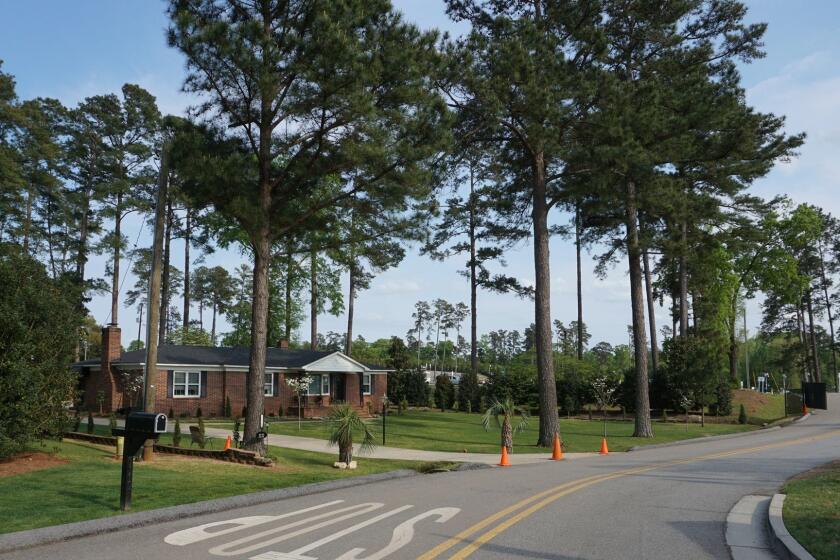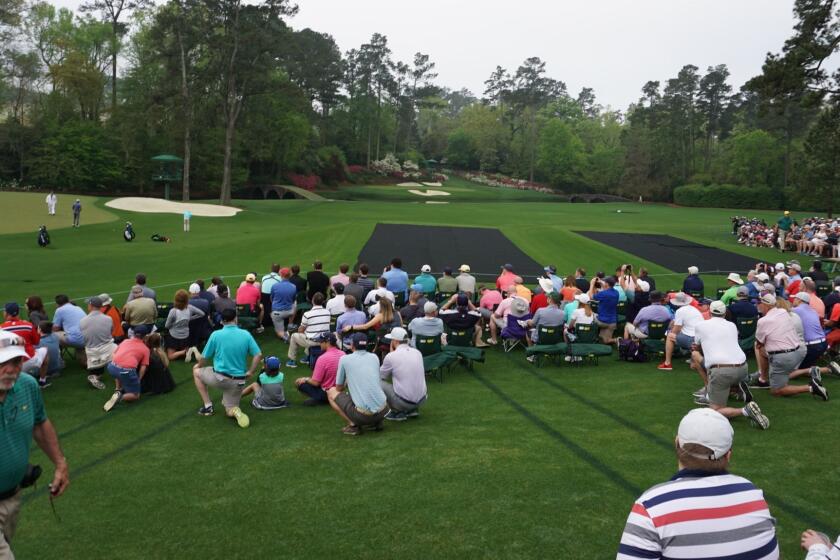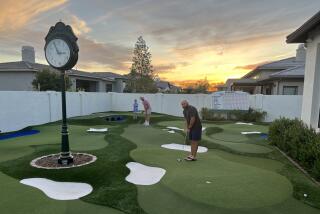
SPRUCE PINE, N.C. — Rob Hamrick could sell sand to the desert.
He has, in fact, shipped 4,000 tons of it from a tiny community tucked in the Blue Ridge Mountains to an exclusive golf course in Dubai. But this is no ordinary sand.
“It’s a beautiful material,” said Hamrick, co-owner of Golf Agronomics, which supplies sand to golf courses.
For five decades, Augusta National Golf Club has filled its 44 bunkers with the brilliant white grains produced near the three-stoplight town of Spruce Pine, a four-hour drive to the north. The dramatic contrast of those immaculate bunkers, the bleached-white teeth of the course, and the verdant grass is a hallmark of the Masters golf tournament.
The pandemic forced the event to move from its traditional spot in April to this week, when it will begin Thursday without spectators, or as they’re called at genteel Augusta, “patrons.”
CBS announcer Jim Nantz, an institution at the Masters, compares the sand traps to bowls of sugar.
“They pop, they stand out,” Nantz said. “Visually, they look different than everything else that you see. It just fits the rest of the motif, that it’s fantasyland for the golfer. Everything appears to be perfect.”


Tiger Woods, the tournament’s defending champion, recently had three truckloads of Spruce Pine sand delivered to his Florida home. He called it “the brightest sand there is in the world,” and joked that whenever he’s in an Augusta trap, he’s tempted to borrow his caddie’s sunglasses.
“Over the years they’ve had it when it’s watered down, or not watered down where it’s more fluffy,” Woods said. “No matter the year, I just don’t ever remember being able to spin the ball very well out of that sand. … But every year it’s so bright and reflective.”
Known in the industry as “SP55,” that chalk-white trap filler is granulated quartz. Although coveted in the golf world, it is merely a waste product of a far more valuable Spruce Pine resource, a material that has competing multi-national corporations in this western North Carolina town guarding their trade secrets with Wonka-like fervor.
“They pop, they stand out. Visually, they look different than everything else that you see.”
— CBS announcer Jim Nantz on the bunkers at Augusta National
Those companies mine ultra-pure quartz to produce sand that is essential in the production of semiconductor chips for computers, phones and other devices. Spruce Pine quartz is molded into crucibles that are ideal containers for preserving the purity of molten silicon, which is formed into single-crystal silicon and ultimately chips. Crucibles made of inferior quartz would contaminate the silicon.
“Total impurities are measured in parts per billion, and some of these materials are less than 50 parts per billion,” said Alex Glover, retired head geologist for the Feldspar Corporation. “That’s hugely pure quartz. Those materials can cost as much as $20,000 per ton. Regular quartz is probably $40-$50 per ton.”
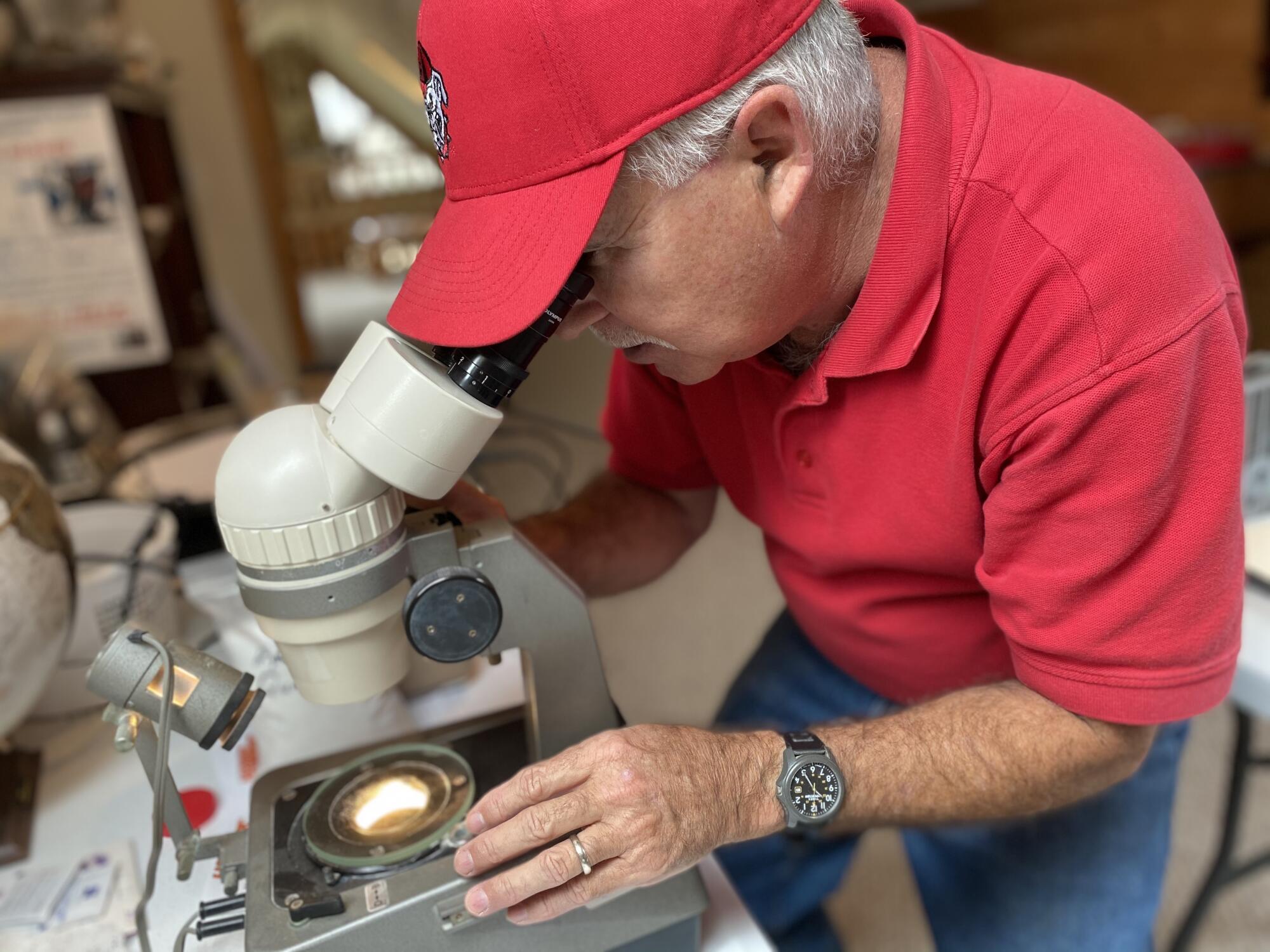
The most valuable Spruce Pine sand is “leachable,” meaning it can be even further purified by an acid-washing process that removes a portion of quartz that has even the slightest impurities. Cracks and fissures in grains of that premium sand allow acid to get inside and thoroughly clean them.
“If you look at it under a microscope, that tells the story of why it’s so glistening and bright,” Glover said. “It’s so crystal-faceted and so diamond-like. The golf course sand is not the purest, but it appears to be the same. It may have a small imperfection of iron or a piece of feldspar, but you can’t tell with the naked eye. You could tell chemically.”
The Quartz Corp., a Norwegian and French conglomerate, politely declined comment for this story, and Augusta National didn’t want to talk about the sand either. The company is largely hidden from the road behind a grassy hill, and a sign at the security gate instructs truck drivers to “turn to Channel 24 on your CB and wait for clearance to enter plant for loading.”
“Even when a salesman was a rep for a machine and had to work on it, they would blindfold him and bring him to the machine,” Glover said. “My company didn’t do that, but others did. These are the only companies in the world that do this kind of work.”
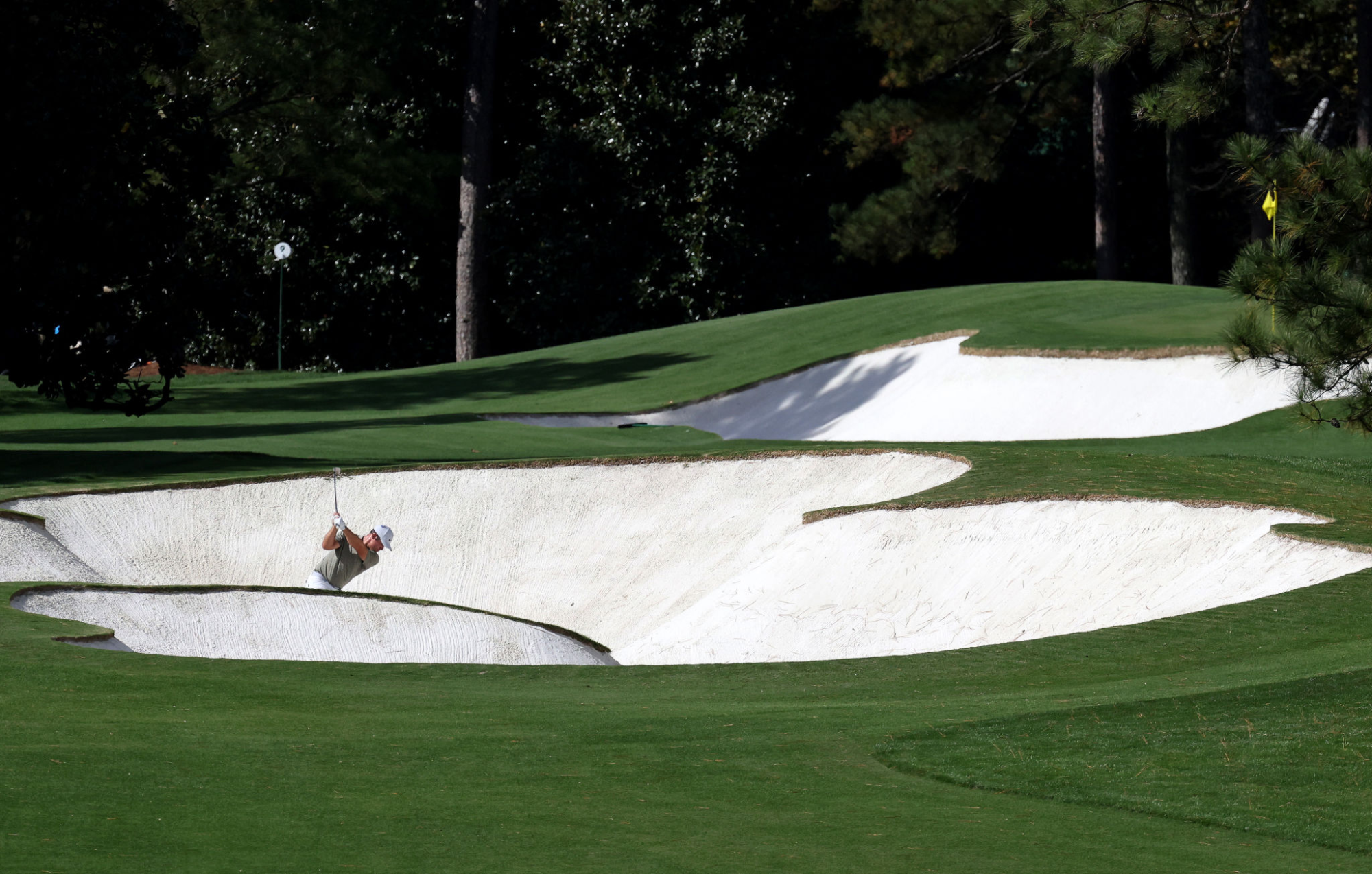

For decades, corporations have searched the planet for quartz as pure as Spruce Pine’s, dispatching geologists to Norway, Brazil, Australia, and elsewhere to no avail. The pegmatites in the Spruce Pine Mineral District, an area about 25 miles long and 10 miles wide, were formed hundreds of millions of years ago under intense heat and pressure. Those rocks were 10 to 15 miles under the surface of the earth, where a lack of water prevented the transfer of impurities.
Generations of Spruce Pine miners tossed the quartz aside in favor of the feldspar and mica. Feldspar is essential in the production of glass and porcelain. Mica gives metallic paint its glitter and is used in drywall joint compound and electrical insulation.
“If it hadn’t been for the mining, we wouldn’t be here today,” said Kay Buchanan, who owns Gem Mountain, a popular tourist attraction in town, and the Hoot Owl Mine, so named for its two eye-shaped portals. “That’s what keeps us going.”
With the computer age came an appreciation for the region’s unique geological bounty.
Said Robin Townsend of the Mitchell County Chamber of Commerce: “We always tell people that if you own a computer, a cellphone, or any kind of electronics, you own a small piece of Mitchell County.”
Owning a small piece of the Masters is a different story. In 2012, Augusta patron Clayton Baker ducked under the ropes lining the 10th fairway and tried to abscond with a beer cup full of bunker sand. He was surrounded by three security guards, brought to the ground and handcuffed, then taken to county jail. That humiliation came with a $20,000 fine.
It’s a more casual setting at Mount Mitchell Golf Club, which neighbors Spruce Pine and uses the same hometown sand in its bunkers. The traps are not as meticulously maintained as Augusta’s, and more than 100 inches of rain this year have introduced impurities that make the sand slightly more tan. But when the sand is fresh, oh my.
“It was a bright white. You’d hit a ball out of that sand and it would just sparkle with mica.”
— WAYNE SMITH ON THE SAND AT AUGUSTA IN THE 1970S
“When the sun’s out and the sand is in its best condition, it’s breathtaking,” said Dean Hicks, a manager at Mount Mitchell. “A lot of times people will just come off the parkway not even knowing we’re here and see it, and they’re just awed by the background with the mountains and when the sun hits that sand.”
But how did Spruce Pine sand make it to Augusta?
In the early 1970s, Clifford Roberts, Augusta National’s chief executive, was unhappy with the club’s bunker sand, which he found inconsistent and coarse. He had a seasonal home at Grandfather Golf & Country Club in Avery County, N.C., and knew that nearby Linville Golf Club was using Spruce Pine sand.
Roberts and Augusta’s golf pro met at Linville with that club’s general manager, pro and Spruce Pine businessman Claude Greene, who owned a Chevrolet dealership and a crushed stone mine.
Also in attendance was a young assistant pro, Wayne Smith. “The opportunity to sit there with Clifford Roberts and just watch these guys was quite an experience,” Smith recalled. Roberts had co-founded Augusta National with the legendary Bobby Jones in the 1930s. “Mr. Roberts didn’t have to say anything for me to be in awe.”
Smith said Roberts tossed a few balls in a greenside bunker on the first hole, and hit them out of the wet sand, as it had rained that day. He liked the way the compacted sand played.
Roberts decided he wanted Spruce Pine sand at Augusta and said he would need enough to fill 13 boxcars. Greene vowed to make that happen, refusing payment for either the sand or transporting it. After all, that sand was a byproduct of the mining process — Greene’s company had to dig holes to bury it.
So moved was Roberts by the gesture, he offered to host Greene at Augusta whenever he wanted to play. Later, Greene received six passes to every Masters.


Getting the sand to Augusta, however, required the transportation equivalent of a mulligan. The first 13 boxcars Greene used had hauled coal, and that black dust mixed with the white sand and dulled the color. He sent new sand in cleaned boxcars.
Smith said that in those years, the Spruce Pine sand was even whiter than it is now, and he surmises it might have contained more mica, as the extraction and separation methods weren’t as thorough as they are today.
“It was a bright white,” he said. “You’d hit a ball out of that sand and it would just sparkle with mica.”
The sand does indeed sparkle and, as Nantz said, is strikingly similar to granulated sugar. Sometimes, too similar.
“Our office secretary at Feldspar Corporation was named Reba, and she had been with the company 50 years,” Glover said. “She and her manager were always playing tricks on each other, so she swapped the sugar bowl for the coffee with the quartz. You cannot tell the difference. The guy put two spoonfuls of quartz in his coffee.
“They were all watching because they all knew. They saw him take a sip, and he could feel the sand in his teeth. They all laughed, and he poured it out.”
A masterful prank.
More to Read
Go beyond the scoreboard
Get the latest on L.A.'s teams in the daily Sports Report newsletter.
You may occasionally receive promotional content from the Los Angeles Times.

